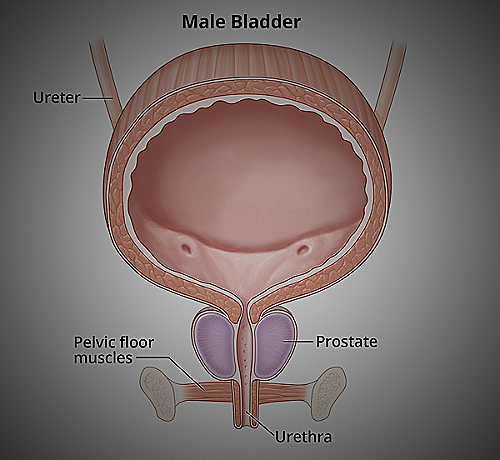Busting the myth: Do Men Really Have Bigger Bladders?
It’s a notion that has been around for a long time – the idea that men have bigger bladders than women. But is it really true?
Let’s take a closer look and see what the science has to say.

First, let’s define what we mean by “bigger.” In terms of bladder size, the average capacity for holding urine is about 500 milliliters (ml) for women and 700 ml for men.
However, the sensation of needing to pee can occur at different bladder volumes, typically between 200 ml and 350 ml for most people.
Looking to learn more about men‘s bladder health? Check out this Youtube video: “How to Overcome Incomplete Bladder Emptying FOR MEN”.
This informative video covers an important topic that many men may not be aware of, and could offer helpful tips and advice.
Don’t miss out on the chance to educate yourself on a crucial aspect of men’s health. Click play on “How to Overcome Incomplete Bladder Emptying FOR MEN” today!
The Anatomy of the Male and Female Urinary Tracts
The Urinary System
The urinary system is made up of several organs that work together to produce, transport, and eliminate urine from the body. These organs include the kidneys, ureters, bladder, and urethra.
The Bladder: A closer look
The bladder is a muscular organ that sits in the pelvis. It has three main layers: the mucosa, submucosa, and detrusor muscle.
The mucosa is the innermost layer that is in contact with urine, while the detrusor muscle is responsible for contracting the bladder to eliminate urine.
The Male and Female Urinary Tracts
Men and women have similar urinary tracts, with the main differences being the length of the urethra and the presence of the prostate gland in men. The prostate gland sits around the urethra and can impact urine flow if enlarged.

How urine is eliminated from the body
Once the bladder is full, signals are sent to the brain to initiate urination. The muscles of the bladder contract, and the urethral sphincter opens to allow urine to flow out of the body.
The Physiological Capacity of the Bladder
As previously mentioned, the bladder can store up to 500 ml of urine in women and 700 ml in men before feeling the need to urinate. However, it is important to note that there is considerable variation in bladder capacity among individuals.
The Habit of Urination
The frequency of urination can impact the perceived size of one’s bladder. If someone has a habit of emptying their bladder more frequently, they may perceive their bladder as being smaller because it never reaches its full capacity.
Exploring the Science of Gender-Based Differences
There is some evidence to suggest that men may have slightly larger bladders than women. However, these differences are not significant enough to impact overall bladder function or capacity.
Frequently Asked Questions
Can bladder size vary from person to person?
Can bladder size change with age?
Conclusion
The bottom line on male and female bladder size and function is that while men do have larger bladders on average, the size of an individual’s bladder can vary greatly and should not be a source of shame or discomfort. It’s important to take care of your bladder health through proper hydration and regular bathroom habits.
